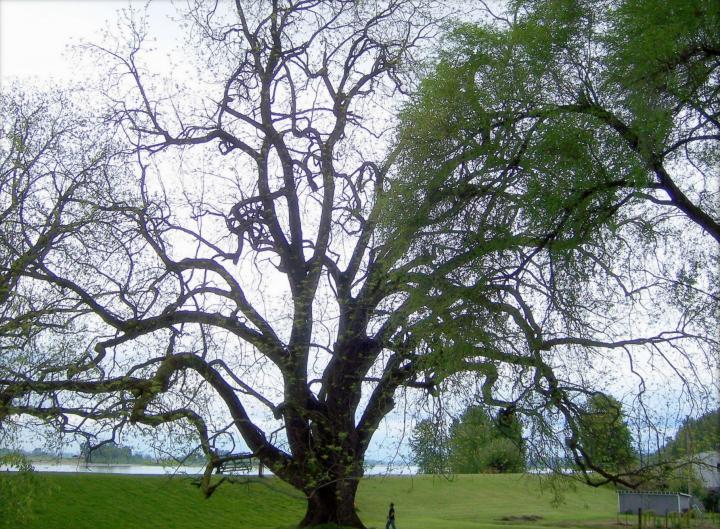





 Photo by Ascending the Giants: Wikimedia Commons
Photo by Ascending the Giants: Wikimedia Commons
The black walnut tree is one of our most valuable and beautiful native trees. The easily worked, close-grained wood has long been prized by furniture- and cabinetmakers for its attractive color and exceptional durability. Its logs are in such demand for veneer that “walnut rustlers” have made off with trees in the dead of night and even used helicopters in their operations.
The early settlers discovered black walnuts growing in mixed forests from Canada to northern Florida and west to the Great Plains. They found that its rich-brown heartwood was exceptionally resistant to decay and put it to use as fence posts, poles, shingles, and sills. When surrounded by other trees in the forest, black walnut grows straight and tall with few, if any, lower branches. When planted in the open, the tree will branch out closer to the ground, developing a spreading shape that makes it easier to harvest its sweet, round, two- to three-inch nuts. The settlers snacked on the nutritious nuts out of hand, added them to soups and stews, and ground them into meal for baking; the hard shells provided a perfect package for storing the nuts over winter.
Unfortunately, the black walnut does have a dark side. Its roots, which may extend 50 feet or more from the trunk, exude a natural herbicide known as juglone that prevents many plants from growing within their reach. Tomatoes, potatoes, apples, pears, berries, and some landscape plants such as rhododendrons, azaleas, and lilacs may be killed or stunted if grown in close proximity to black walnut roots.
In spite of this, black walnuts make great shade trees for larger properties. They commonly grow to 50 feet or taller and about as wide, and specimens of more than 100 feet have been recorded. Black walnut’s large, fernlike foliage provides light, airy shade for those grasses and ground covers not affected by juglone. In autumn, the leaves turn bright yellow, contrasting nicely with the tree’s rugged, dark bark.
Black walnuts require a deep, fertile soil with a near-neutral or slightly acidic pH. They are pretty much disease-free and are threatened by few pests, with the exception of perhaps an occasional helicopter.
Copyright © www.100flowers.win Botanic Garden All Rights Reserved